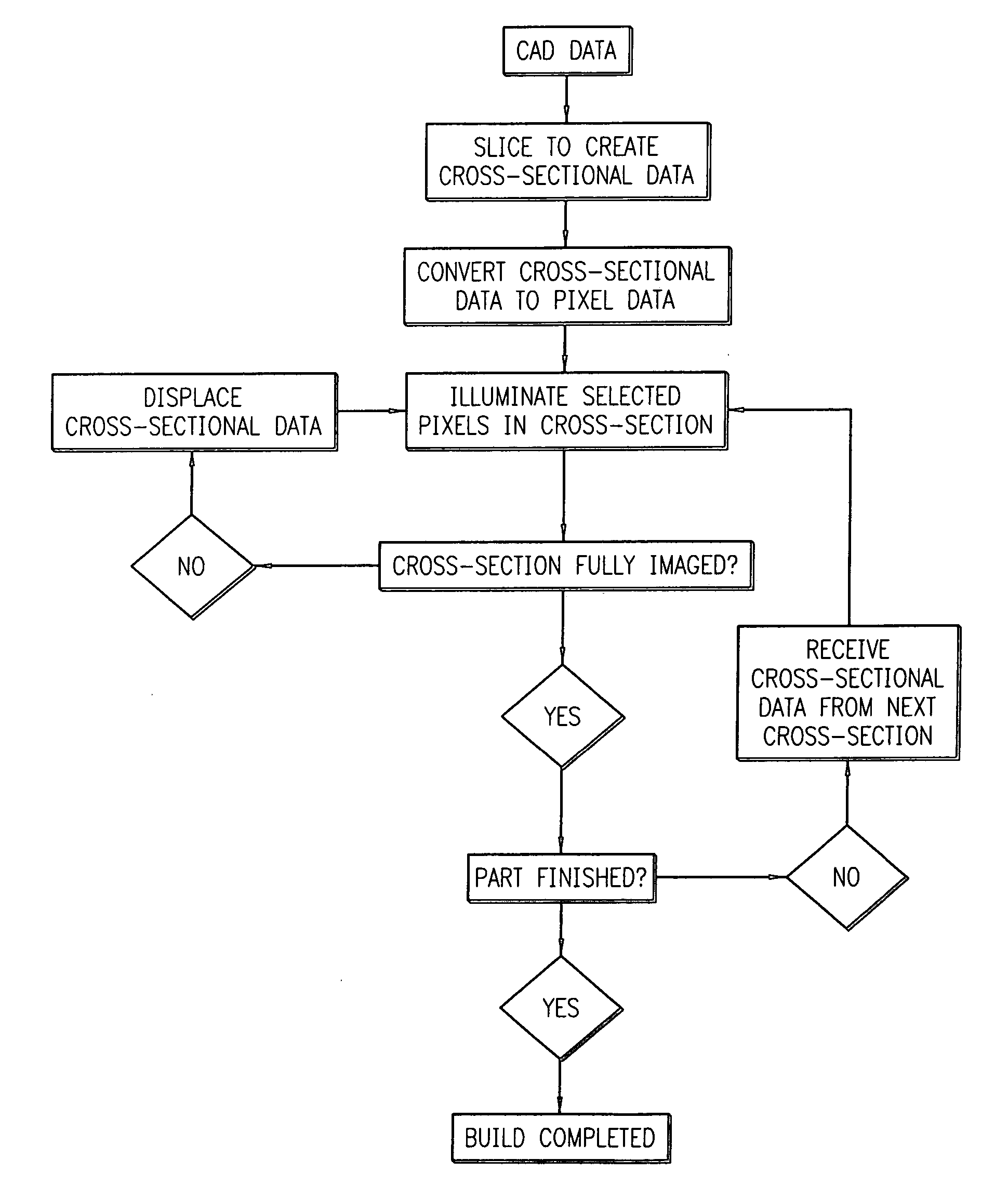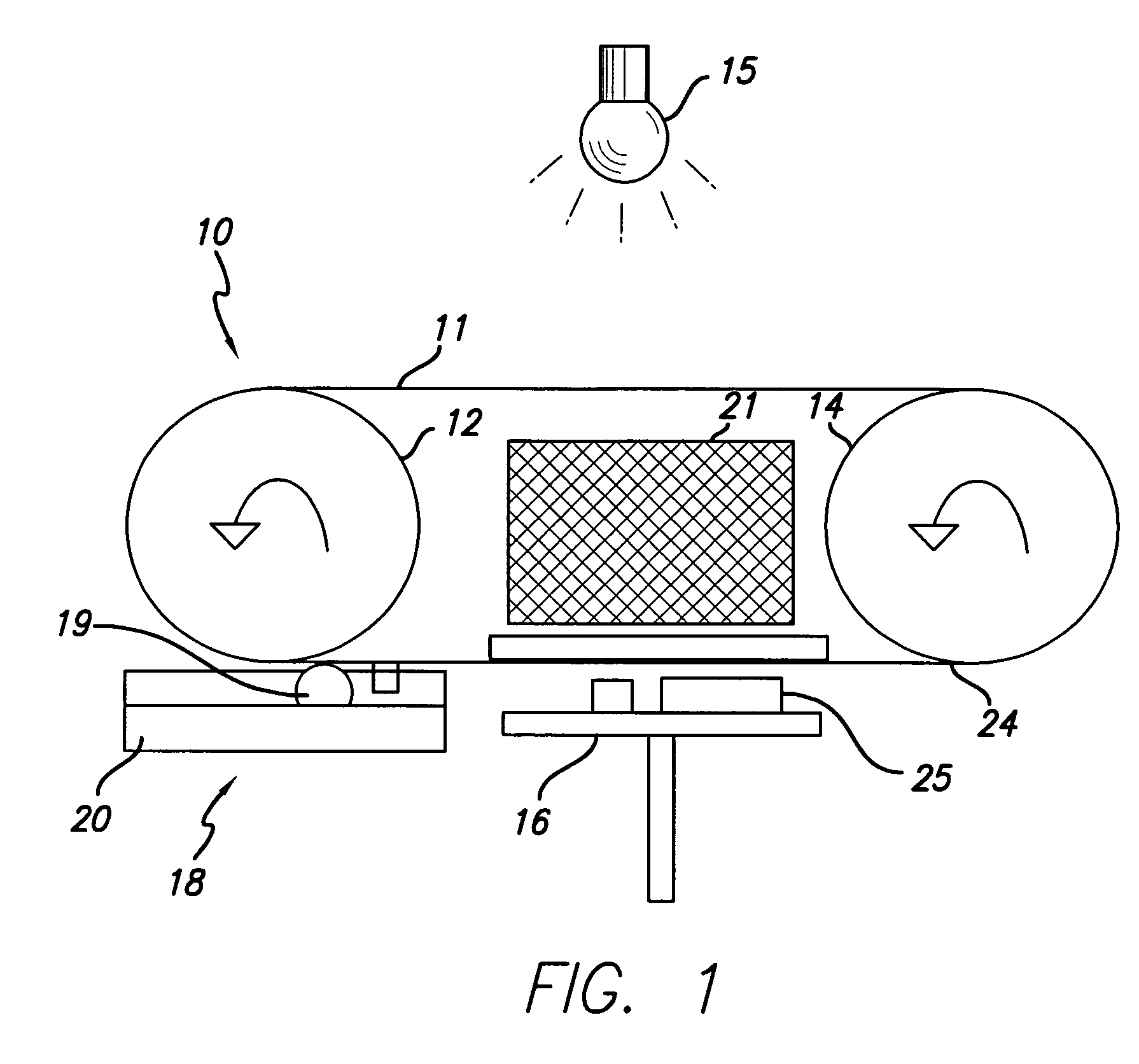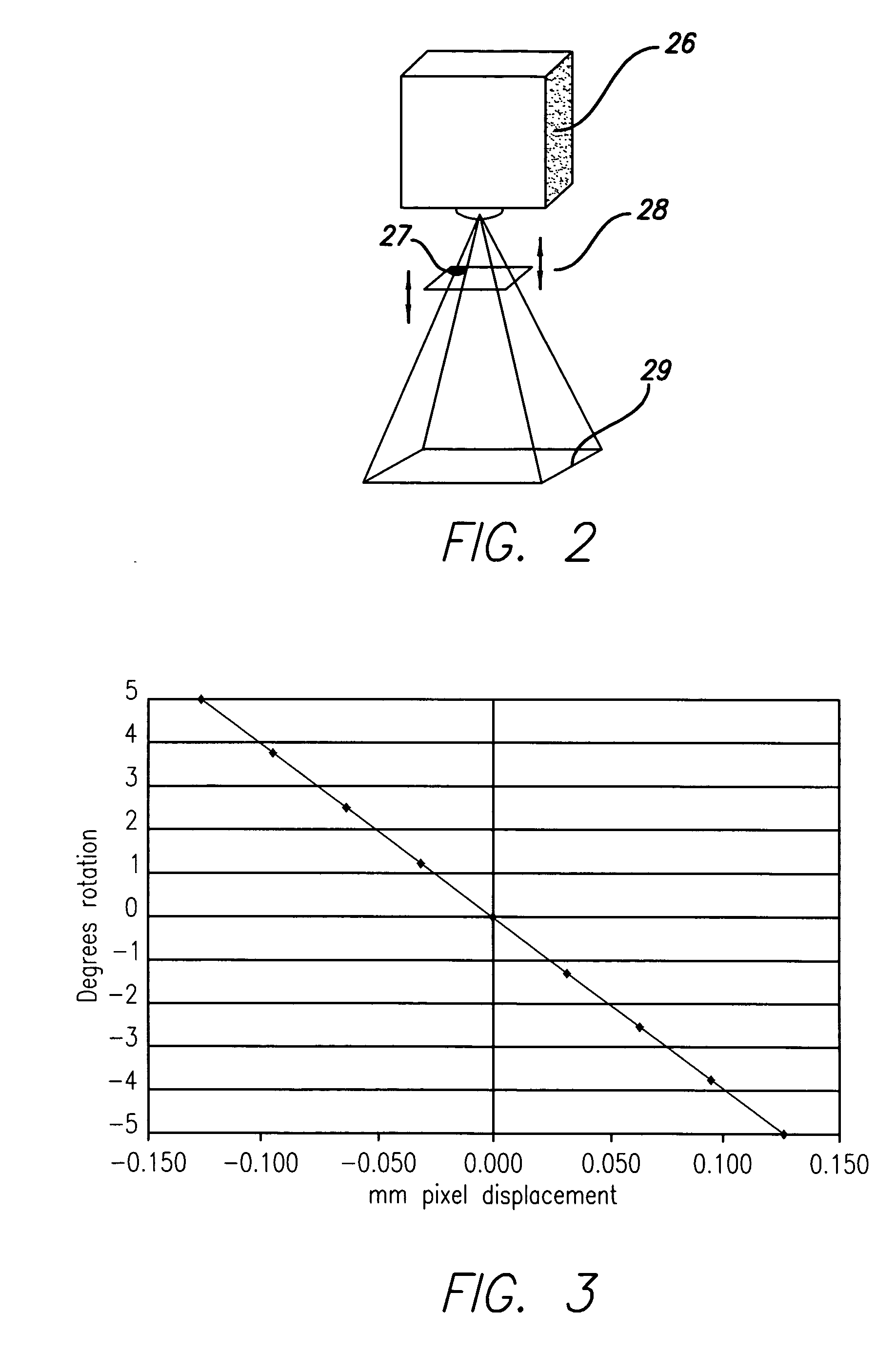Edge smoothness with low resolution projected images for use in solid imaging
- Summary
- Abstract
- Description
- Claims
- Application Information
AI Technical Summary
Benefits of technology
Problems solved by technology
Method used
Image
Examples
Embodiment Construction
[0025] Flexible transport solid imaging of the type disclosed herein involves the layer-by-layer build-up of articles from a visible or UV liquid photopolymer material that is delivered by the flexible transport endless belt or reciprocatable sheet of film. Liquid photopolymer material is applied to the endless belt or reciprocatable sheet of film from a cartridge employing a gravure wheel that picks up the photopolymer and transfers it to the flexible transport device to provide a fresh material to create new layers as the object is built. The photopolymer is imaged by radiation projected from either a digital UV projector or a digital visible light projector. The projector includes spatial light modulator, such as a digital micro-mirror device (“DMD”), that selectively illuminates pixels for imaging. Visible light projection is a preferred approach.
[0026] Solid imaged parts are preferably built on an elevator platform that moves the build object or part up into contact with the l...
PUM
| Property | Measurement | Unit |
|---|---|---|
| Fraction | aaaaa | aaaaa |
| Angle | aaaaa | aaaaa |
| Size | aaaaa | aaaaa |
Abstract
Description
Claims
Application Information
 Login to View More
Login to View More - R&D
- Intellectual Property
- Life Sciences
- Materials
- Tech Scout
- Unparalleled Data Quality
- Higher Quality Content
- 60% Fewer Hallucinations
Browse by: Latest US Patents, China's latest patents, Technical Efficacy Thesaurus, Application Domain, Technology Topic, Popular Technical Reports.
© 2025 PatSnap. All rights reserved.Legal|Privacy policy|Modern Slavery Act Transparency Statement|Sitemap|About US| Contact US: help@patsnap.com



